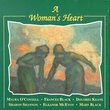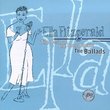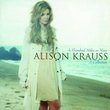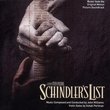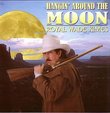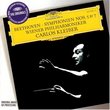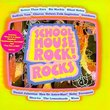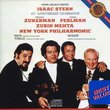| All Artists: Dmitry Shostakovich, Modest Mussorgsky, Mariss Jansons, Philadelphia Orchestra, Robert Lloyd Title: Shostakovich: Symphony No. 10, Op. 93 / Mussorgsky: Songs and Dances of Death (orch. Schotakovich) Members Wishing: 0 Total Copies: 0 Label: EMI Classics Release Date: 3/14/1995 Genres: Pop, Classical Styles: Vocal Pop, Historical Periods, Modern, 20th, & 21st Century, Symphonies Number of Discs: 1 SwapaCD Credits: 1 UPC: 724355523228 |
Search - Dmitry Shostakovich, Modest Mussorgsky, Mariss Jansons :: Shostakovich: Symphony No. 10, Op. 93 / Mussorgsky: Songs and Dances of Death (orch. Schotakovich)
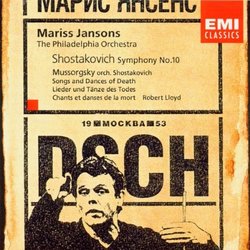 | Dmitry Shostakovich, Modest Mussorgsky, Mariss Jansons Shostakovich: Symphony No. 10, Op. 93 / Mussorgsky: Songs and Dances of Death (orch. Schotakovich) Genres: Pop, Classical
|
Larger Image |
CD DetailsSimilarly Requested CDs
|
CD ReviewsWonderful Tenth, and Lloyd Sings Beautifully Karl Henning | Boston, MA | 07/09/2002 (5 out of 5 stars) "Jansons (who taught for a while at the St Petersburg Conservatory) and the Philadelphia Orchestra have done Shostakovich a great service with this disc. This is my favorite of all Shostakovich's symphonies, and this is the best recording of it I have heard yet.I could spend a good long time talking about the entire symphony. But I want to concentrate on one brief moment in the first movement.The whole first movement is a broad, free sonata-design. I would place the start of the development proper, with the soft entrance of the bassoons/contrabassoon and timpani roll at rehearsal number 29 (in this Kalmus miniature score edition, p. 25). Two clarinets in unison, with a pair of sf-p entrances, subtly enrich the texture. Then the two oboes, also in unison, are a clear arrival, and on reaching their second sustained note, third-space C, they are joined by the sopranino clarinet.This, such a small-seeming detail, is really telling. On this recording, this moment is miraculously in tune, in a way I have never heard before (if I heard it this "in tune" back in Ohio the first time I heard the piece, I have no idea, now ... didn't know the score at the time, and was just rapt by the music).At this point, Shostakovich was a deeply-experienced orchestrator, and he knew perfectly what to expect of almost any instrument in almost any situation. And it is clear that "gritty intonation" is exactly what he wants there.If he had really wanted clean, pure intonation, he would perhaps have started off with a single oboe - two oboes in unison in that husky low range is, shall we say, a timbre rich in pitch-informants. So for cleanliness, he might have chosen a single oboe, and then added, to that third-space C, the flute, perhaps even two flutes in unison; the added timbre would be subtle, and perfectly assured, pitch-wise. Or even the regular soprano clarinet, which (keyed in A for this movement) would be reading an E-flat in the lower reaches of the sweet-toned clarino register.As Shostakovich scored it, when the two oboes land on the C, they are joined by a sopranino clarinet, reading a throat-tone A - a note which requires particular skill (and a little luck) to "shade" so that it is in tune.In fact, if Shostakovich had really wanted to give the E-flat clarinet player an even chance of landing on that A in tune with the oboes, he could have had the sopranino clarinet start with the oboes - for the two measures which the oboes play before the E-flat clarinet comes in, would lie very easily on the clarinet.Shostakovich was no green conservatory student at this point, so when he writes like this, in a manner against which most orchestration textbooks would warn you in large, bold-face, optic yellow type, he must assuredly mean it.So maybe the miraculously fine intonation on this Jansons/Phila/EMI recording is, perversely, somewhat contrary to the composer's wishes ....Can't leave off, though, without pointing out that the marvelous whirlwind scherzo of this symphony sounds great on this disc -- while the brasses get loud, you still hear TIMBRE and not just shriek. God, I love this piece.Robert Lloyd is in great voice for the Mussorgsky, and Shostakovich's orchestration is both brilliant, and perfectly in character. I have heard recordings of both Vishnevskaya and Arkhipova singing these, and they can both sing these wonderfully; but nevertheless, I feel a bass is needed for this song-cycle. Lloyd's voice is perfect, and the Philadelphia Orchestra are the perfect accompaniment." A Wrenchingly Beautiful Performance of Shostakovich's 10th Grady Harp | Los Angeles, CA United States | 05/23/2005 (5 out of 5 stars) "For all the attention concert halls pay to the classically oriented, easily accessible, popular Symphony No. 10 of Dmitri Shostakovich there are not as many viable choices for recorded performances of this work as there are of, say, the also popular 5th Symphony. This fine recording with Mariss Jansons conducting the Philadelphia Orchestra dates back to 1995 and oddly there are few subsequent recordings to equal it. Part of the power of this long symphony in which Shostakovich released his frustrations and fears of the Stalin regime and celebrated the death of the tyrant is in the construction of the score: the opening movement marked Moderato uses the entire orchestra in conversations between massed strings, massed brass, solo winds, and various percussion to open seething wounds of a people (and artist) downtrodden by the dictatorship of Stalin; the second movement Allegro is a musical portrait of Stalin in all of its cynicism and military march motifs; the third movement Allegretto is a waltz based on Shostakovich's personal reaction to Stalin and the USSR and its leitmotif is based on the notes D, E-flat, C, and B which correspond to the D-S-C-H, the first initial and the first three letters of his last name; the final movement Andante-Allegro brings all the repression and agony to a close with a finale 'resolute assertion of the individual's triumph over a souless, dehumanizing regime'. But the real power of this epic work is by far better experienced in the concert hall where there is a direct communion between the orchestra and the audience. A recent performance in the Los Angeles Disney Concert Hall with Esa-Pekka Salonen is full control of this mighty work reveals just how powerful is this symphony. The acoustics of the hall allowed the phenomenal range of color of this splendid symphony to triumph. One only hopes a recording is forthcoming. The idea of adding Shostakovich's orchestration for the Mussorgsky 'Songs and Dances of Death' as beautifully sung by Robert Lloyd is a fine bonus for this CD. The performance is radiant. (The LA Phil performance included Peter Lieberman's 'Neruda Songs' premiere with Lorraine Hunt Lieberson in an otherworldly, breathtakingly beautiful performance - a striking love-drenched polar opposite to the following stridency of the Shostakovich 10th). There are other recordings of the 10th that have fine performances but for the overall conception and brilliance of reading the Jansons is for this listener the finest for the time being. Grady Harp. May 05" Well-played but somewhat tame Santa Fe Listener | Santa Fe, NM USA | 10/04/2005 (4 out of 5 stars) "I won't argue with reviewers who obviously love the Shostakovich Tenth and this performance of it. It has the requisite skill and sympathy with the composer's idiom. There are formidable hurdles, though. The work's first movement is the strongest, followed by a biting scherzo, music that supposedly dances on Stalin's grave. The last two movements, as so often happens in Shostakovich's major symphonies, rely on banal musical material that is hard to bring off.
I was a fan of Jansons in his Rachmaninov symphony cycle, but after buying three or four of his Shostakovich cycle, I'm not so sure. It's hard to much that's Russian from this Russian-trained conductor. Too much here is faceless, itnernational big-deal conducting. If I want that, Karajan's two versions of the Tenth are more spectcular examples. Haitink is on a par with Jansons but in even better sound. For raw Russian spirit, there are two Mravinsky performances of blazing authenticity. An oddball alternative, only available on a 10-disc anthology from the Chicago Sym., has Leopold Stokowski leading a live performance that has more electiricty than any of the above. Jansons doesn't reach that high." |

 Track Listings (9) - Disc #1
Track Listings (9) - Disc #1